-
Posts
2,297 -
Joined
-
Last visited
Content Type
Profiles
Forums
Gallery
Events
Posts posted by dafi
-
-
Grande Finale 🙂
Finally I found the time to do the last beauty shots of my little series of my 5 slices..
It was a most exciting project, that started with simply trying out new resin, took off by itself, and developed into nice display on the history of that grat ship.
Already longer finished was the rigged version of a 1805 first rate.
Now come the version as build from about 1780, the actual state of my research for the iconic 1805 version, the black and white version of past 1910 and the latest version of the museums ship in its past 2016 look.
Here the overview.
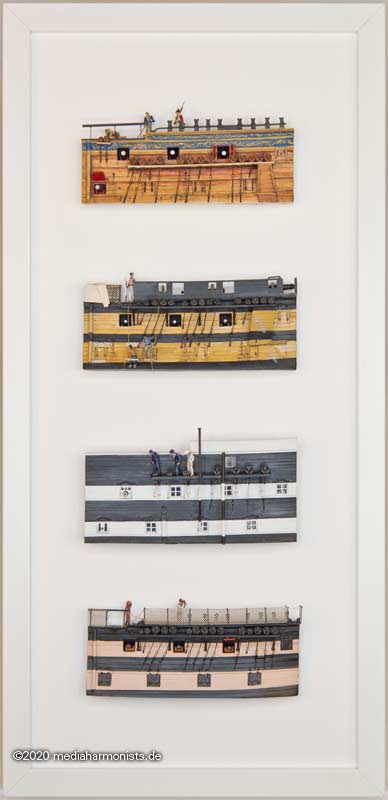
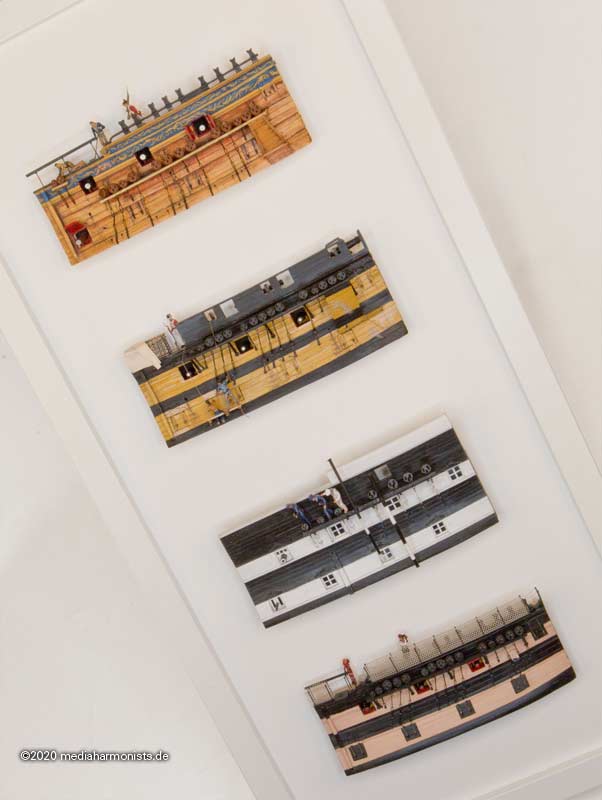
Travelling times in 4 pictures 🙂
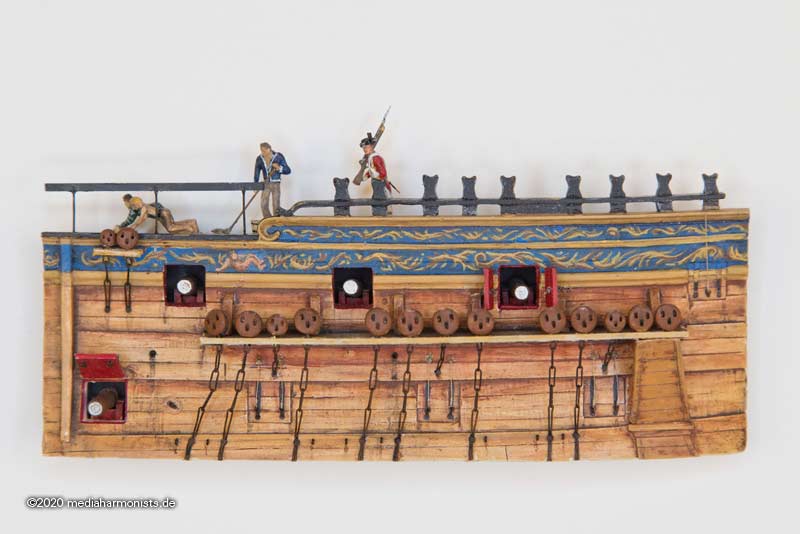
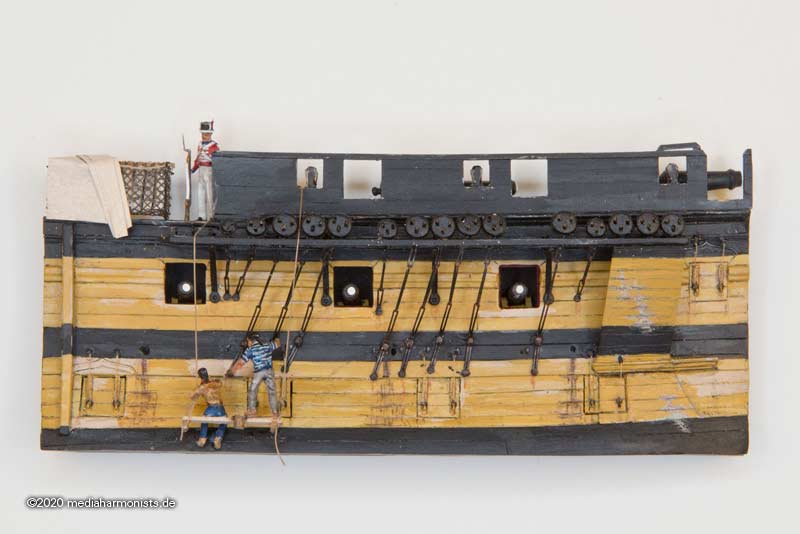
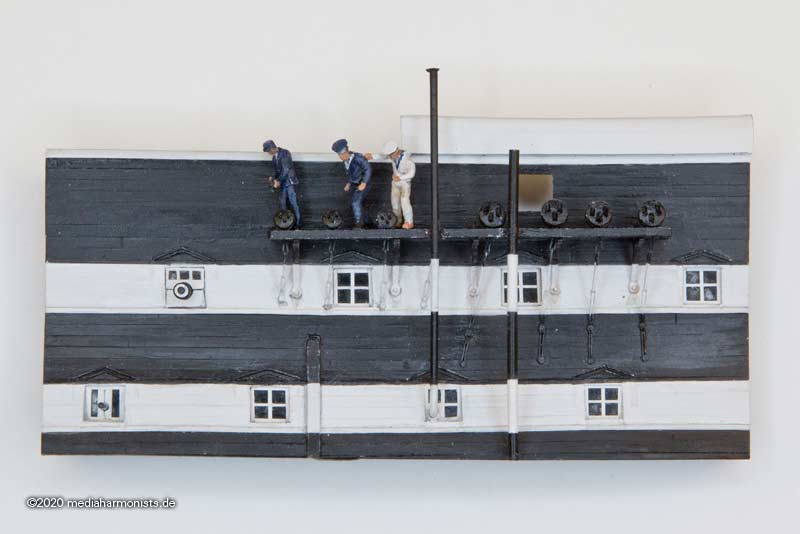
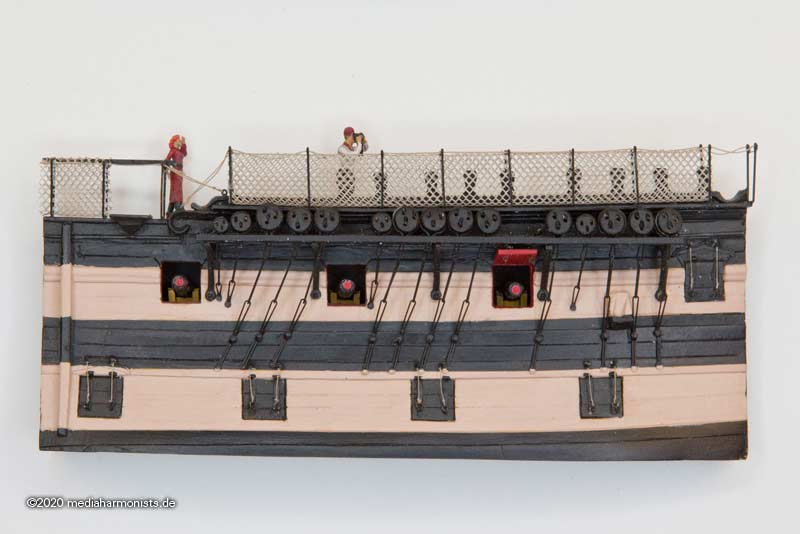
We start with the beauty of the as build version, with its nice friezes and - not visible - the wonderful carvings on head and stern.
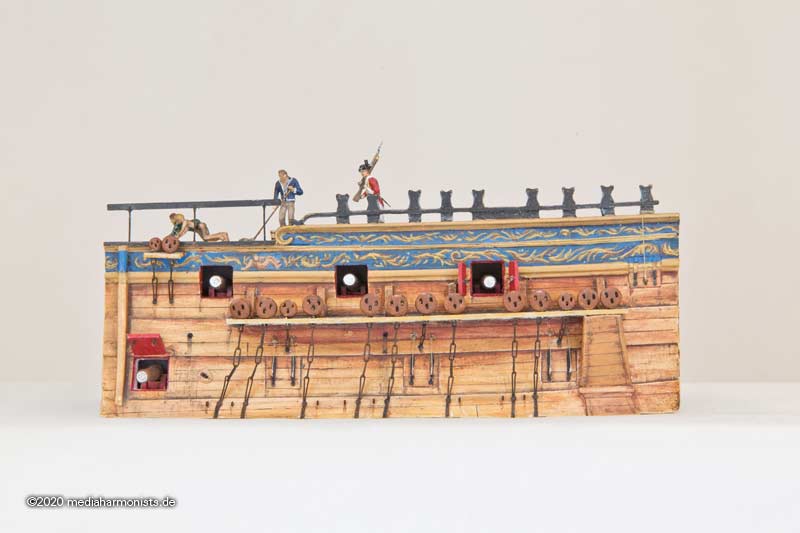
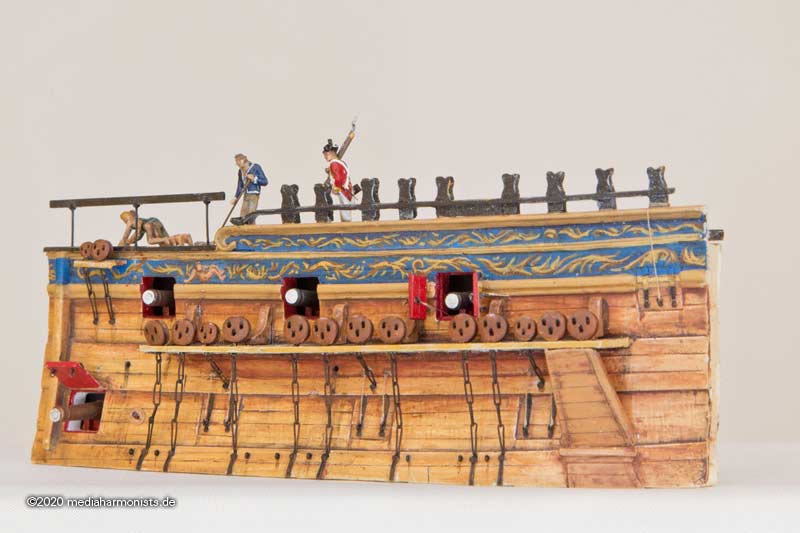
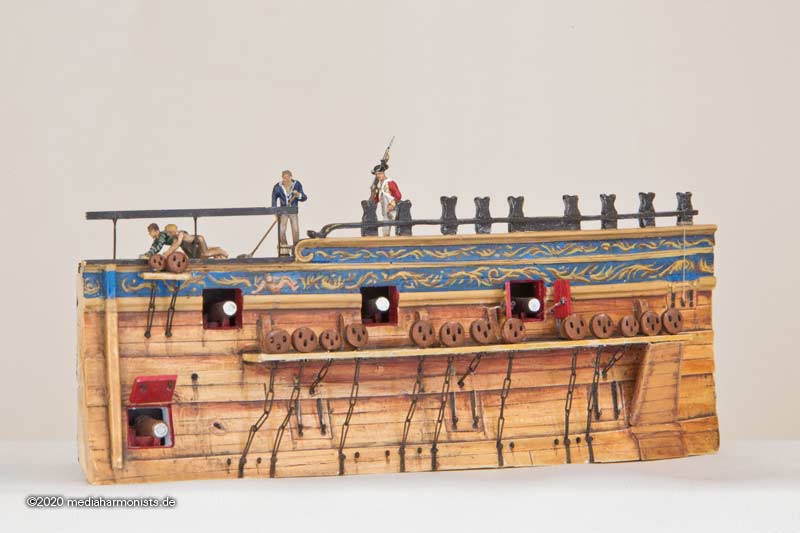
The best known version is the least known by far. Done under pressure of time there is no known documentation. Here shown is the intermediate result of my research so far.
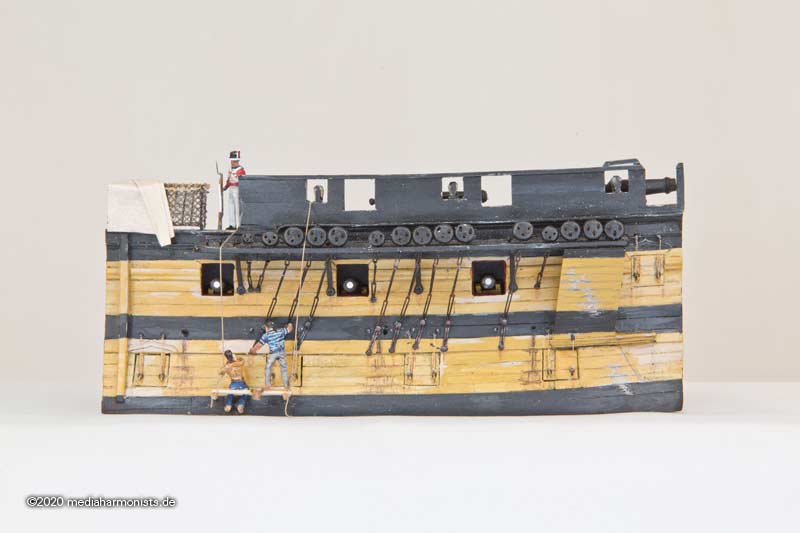
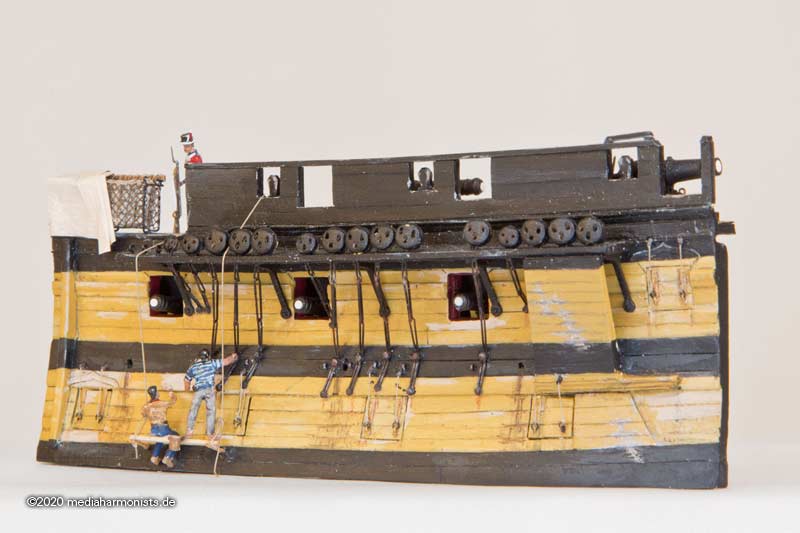
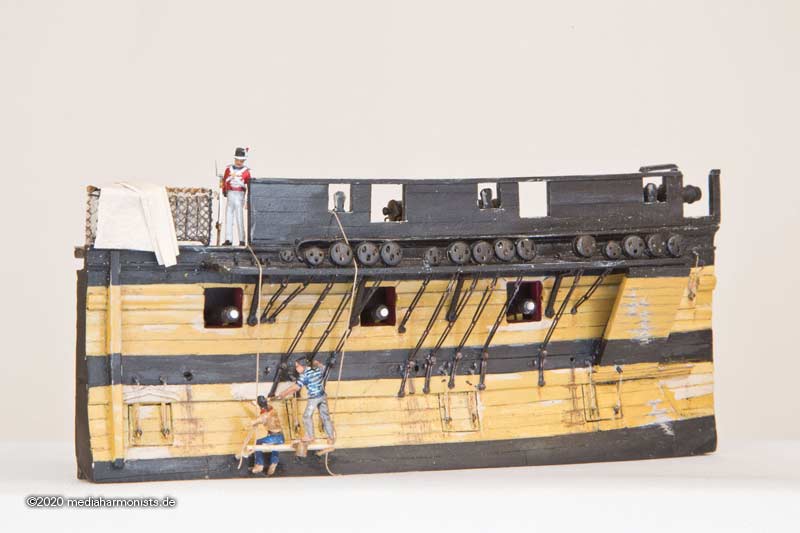
The biggest changes were suffered from 1814 on to 1920. The planking was removed and the new one was flush without any wales. The bow was reconstructed as a round bow, the hammocks got build cases and the masts were replaced by smaller steel ones with a reduced number of shrouds.
Seen by todays eyes a pity but still the historical version that lasted the longest.
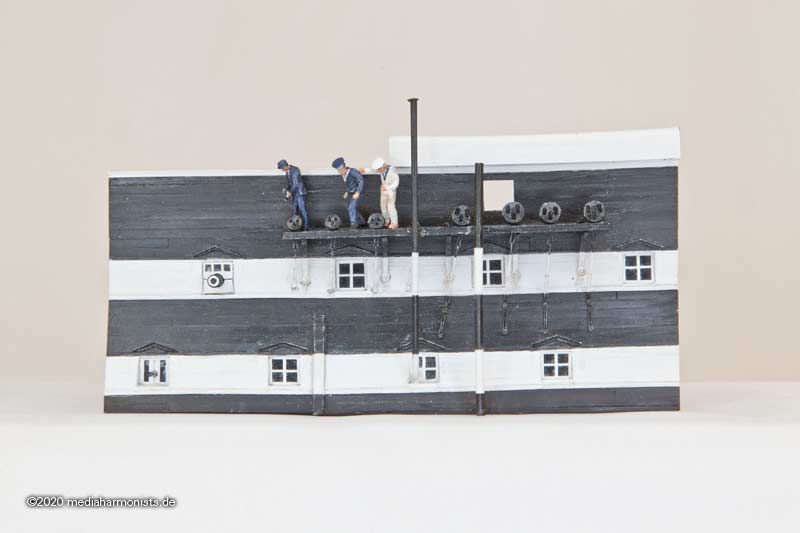
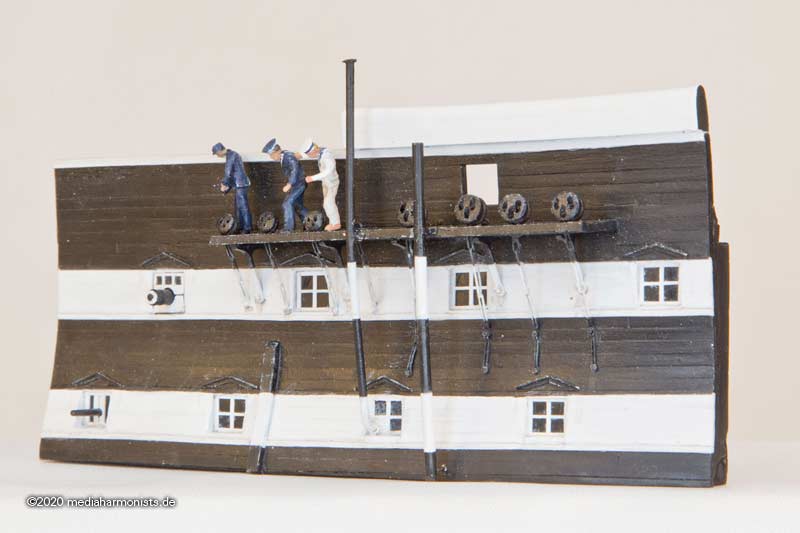
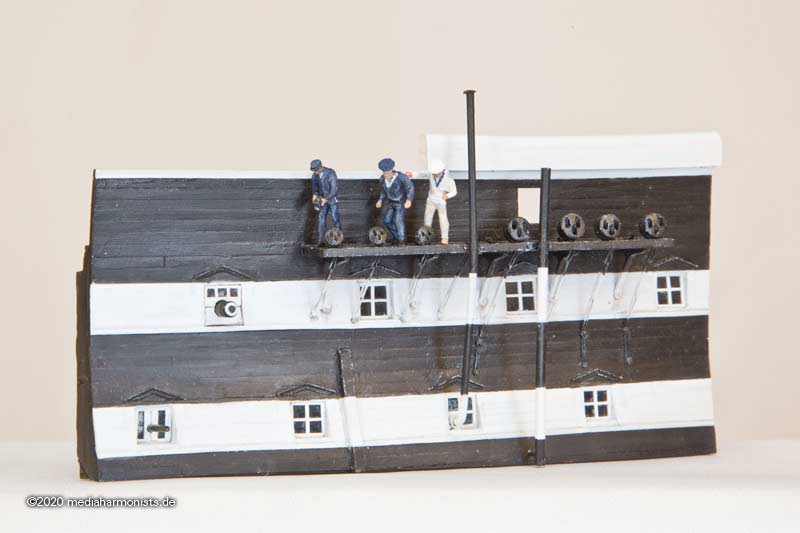
And of course the version that is the best known, the almost complete reconstruction in Portsmouth 😉
Even with many anachronisms and differences to contemporary sources, this ship gives a nice impression onto how ships may have looked in the old days, a pleasure to be there and see 🙂
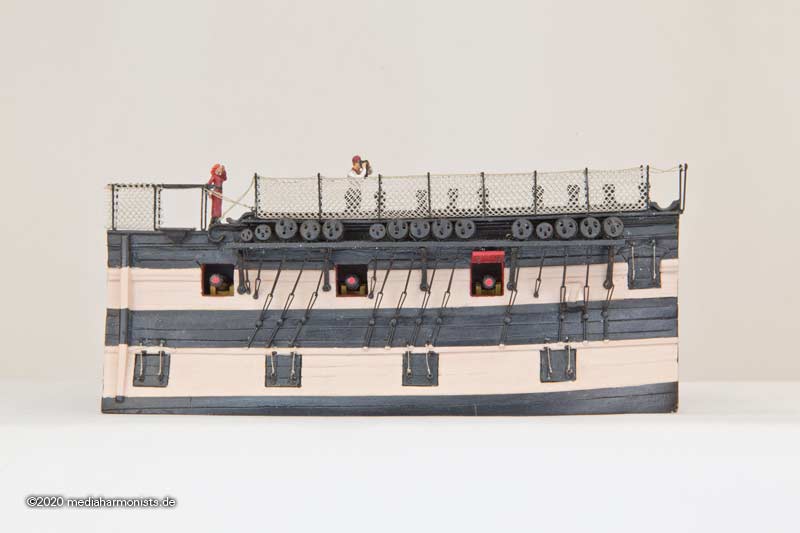
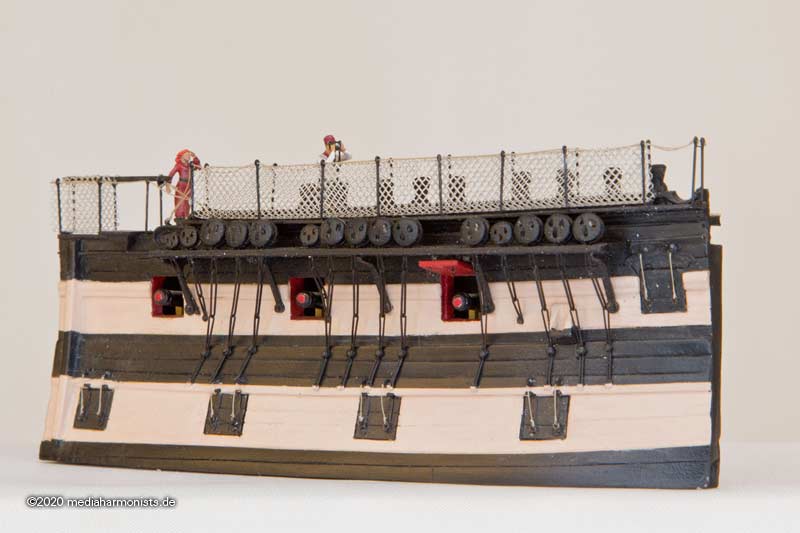
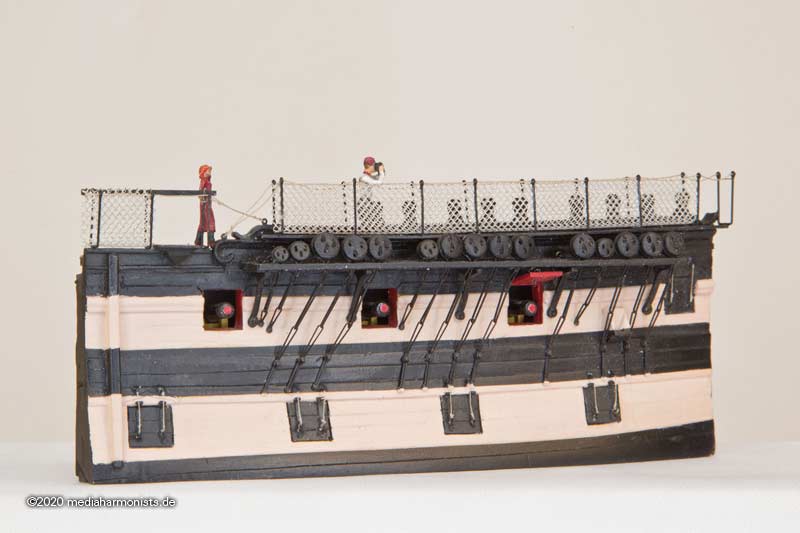
XXXDAn
- mort stoll, shipman, rybakov and 7 others
-
 10
10
-
-
-
Hello @97Bill, as I am far off having started the yards, I have no idea about the dimensions yet. My guess is 80 cm height, length 100 cm+ and the width 35 cm (65+ with stunsails).
@Kelp I used the copper in the exact width and ran them down in long lines, not single plates. A toothpick was great to form the overlap of tiling. And it holds perfect to the date, several years already on there.
XXXDAn
-
The only gun drill on film I know that is quite true is on Master and Commander , especially on the bonus disc. All other ones are not very trustable, the idle members just standing around "bored", also having all the space in the world, as the neighbor crews are missing ...
I tried some time ago to give a better impressen onto this topic here:
XXXDAn
- Larry Cowden, el cid, mtaylor and 1 other
-
 4
4
-
-
As there is an ongoing discussion about Victory´s midship section at the very moment, I would like to bring up this topic again, that still puzzles me. And I think others too 😉
I also realised, that I never presented the renderings I did those days trying to understand the possible setup on the Victory in about 1788 to 1805. As said before, a mere guess based upon the available sources. The 3 light brown tubes are the elm tree pumps. For the "long" pump I opted for no cogwheel in the lower deck, therefor no half round hood.
All the best, DAniel
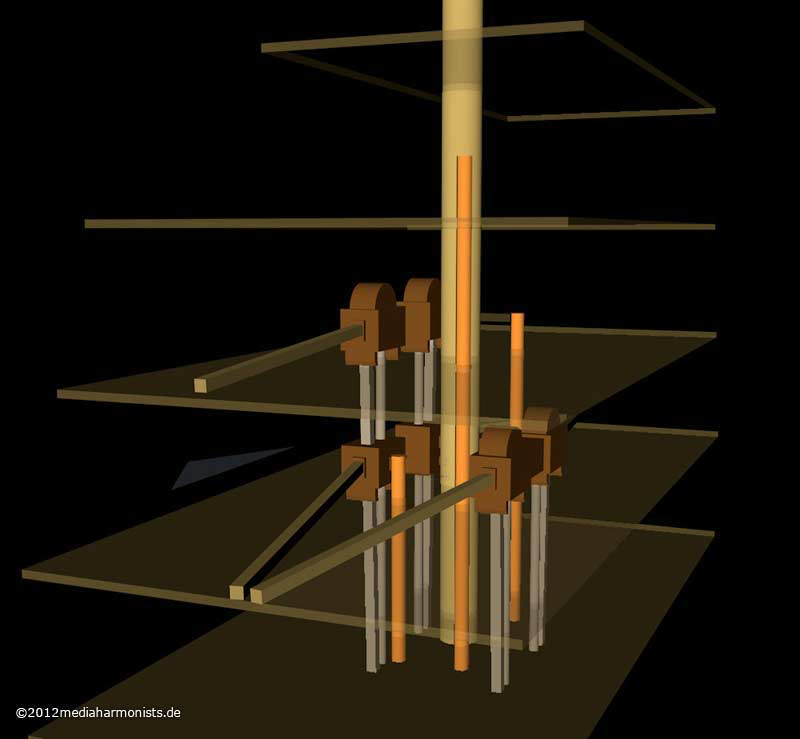
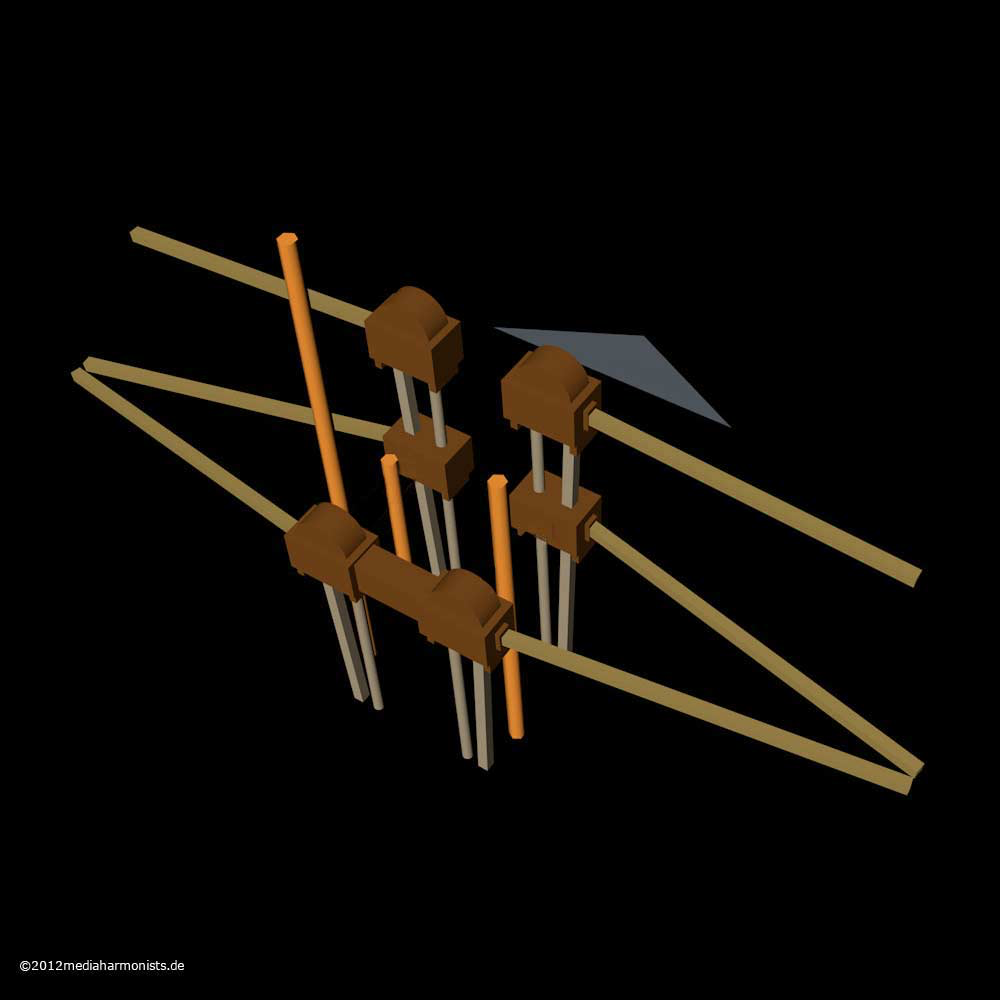
-
-
Have a look at NMM for plans of other first, second and third rates of that period. All layouts are identical. Just look for the bigger changes in the layout and when they took place. Then you should be able to create a quite accurate and true model :-)
For the deck section in front of the main mast, you have a great reference in the 1765 models displayed in NMM.
XXXDAn
-
-
On 10/26/2020 at 8:15 AM, rkwz said:
I haven't forgotten the hammock netting in case you were wondering haha. Still tossing up some ideas involving putty, staples and tulle 😁
Dod you consider to show the hammocks in a covered mode? Just a block of balsa or foam in the right dimensions, and some paper handkerchiefs with some PVA applied can do a great job in your scale to represent the canvas cover.
Here is a tarred version 🙂
https://collections.rmg.co.uk/collections/objects/66307.html
XXXDAn
-
As I am a very shy and ´umble person, I forgot to present myself 😉
So I looked for a template ...
https://www.mediaharmonists.de/bilder/Sammler33/Utrecht-170527_3805-(1).jpg
.jpg)
... carved a tiny bit ...
https://www.mediaharmonists.de/bilder/Sammler33/IMG_1141-(1).jpg
.jpg)
... and here it is the small minni-me 🙂
.jpg)
https://www.mediaharmonists.de/bilder/Sammler33/IMG_1147-(1).jpg
.jpg)
https://www.mediaharmonists.de/bilder/Sammler33/IMG_1149-(1).jpg
.jpg)
Even with my silver medal present 😉
-
-
-
In our german forum we have a nice collection of fire hearths throughout the centuries. 🙂
Note: Registration needed to see the page
XXXDAn
-
Wooden structures on plastic - with me the first thing to be scratched of as long as it is not minimum scale 1:4 🙂
See my Vic, made a great difference.
XXXDAn
- mtaylor, Canute, Old Collingwood and 1 other
-
 4
4
-
There are plenty of different scalers. And each gives different results, so one has to try out to find the wanted effect.
I use pen scribers, the back of cutter blades - there are different thicknesses - , the back of scalpel tips and scalers from the dental purposes. And use a sttel ruler 🙂
Use each time a blank sheet and try out, sometimes it is scribing, sanding and rescribing 🙂
Another tip: Replace the 3 part section by a fresh sheet from the hobby shop. It is much easier. Take te oriinal decks as template for the outside form, then scribe without having to bother for all the disturbing things on the deck and then just do the openings. Like tis it is easier to scribe and one has not to bother the 2 split-lines. Those always tend to leave traces as the joint react differently to the scribing tool than the rest of the line.
XXXDAn
-
-
Just another off topic to the picture in the first post: Have you realized all the people painting the ship? There are two man on top of the davits in question, two are painting the main topmast, two are painting the fore topmast and there were more doing works in the missing parts of the picture 🙂
XXXDAn
-
-
On 10/5/2020 at 10:54 AM, shipman said:
Victory was re-purposed several times after 'retirement'; mainly as an accommodation ship, also as a prison, a hospital and a prison.
Sometime she was rammed by an Ironclad which broke it's tow on it's way to the breakers. Photo's do exist of this incident, but can I find them on the 'net'?
@shipmanHere they are 🙂
-
These "side"-davits were not present at Trafalgar for sure, the earliest proof I know is about 1860.
Even the aft Davits do not show up as evidence before 1824.
All contemporary drawings, paintings and plans I know do not show these davits until 1807- The last one without is from Robert Dodd, published in 1807, still with the old beakhead bulkhead.
First appearance are on drawings John Christian Schetky 1824 and 1827 and Edward William Cooke 1828. Ever since these are a prominent feature on all following illustrations.
The same goes for the stern davits, who first shown up in 1920 if I am not mistaken.
But these are my little thought after looking at this detail for a long time already. Take your own conbclusions 😉
XXXDAn
PS: Clarkson Stansfield´s "Victory being towed into Gibraltar after Trafalgar" was made after 1857 afaik, so I would not take too much into consideration for the details.
-
-
Its always great to have friends that keep an open eye and give valuable hints. Special thanks go to @Morgan who helped me so much already and here came his updates. The bolster of the anchor lining was to be extended more to the front. Possibly to have the possibility for someone to stand there if the catting needed an action from there. And the small flap on top of the carronade. Most carronades had ports that were higher than the normal ones. As the solid bulwark was not high enough that was an easy way to protect the wood. Thank you tons Gary!
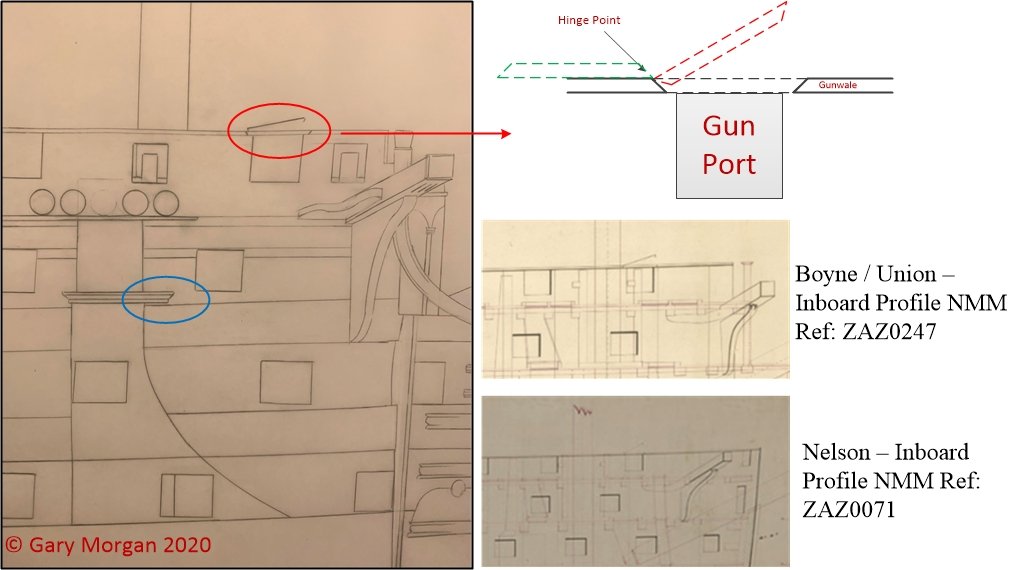
So the bolster needed a good base to adjust the height ...
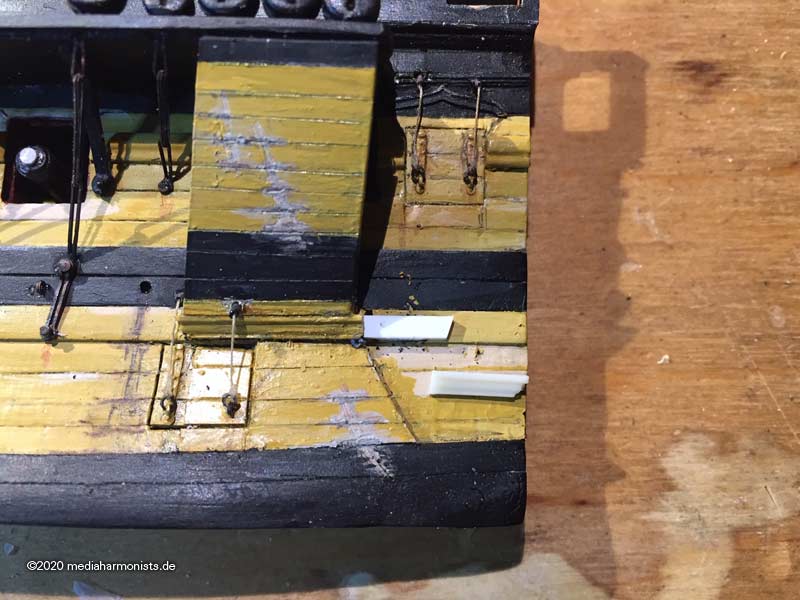
... and the extension was fitted.
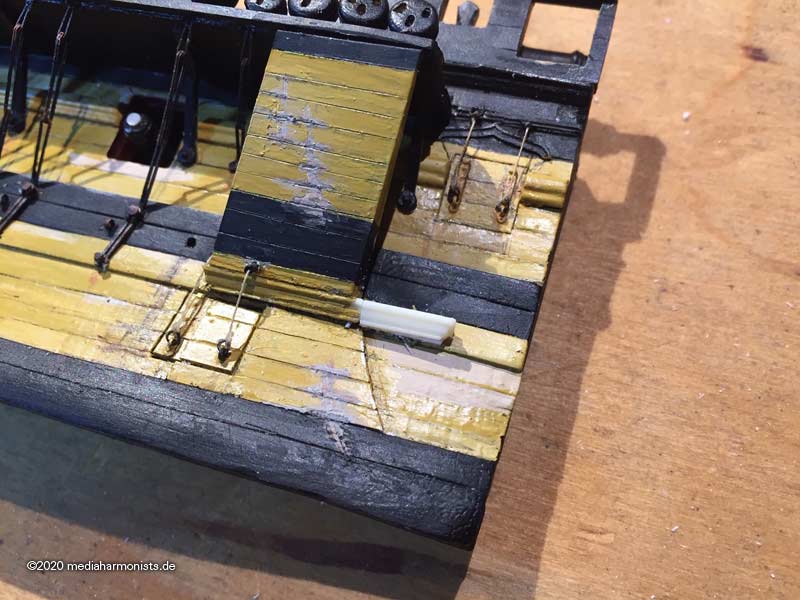
With a lil´bit of color it looks like it was already always there.
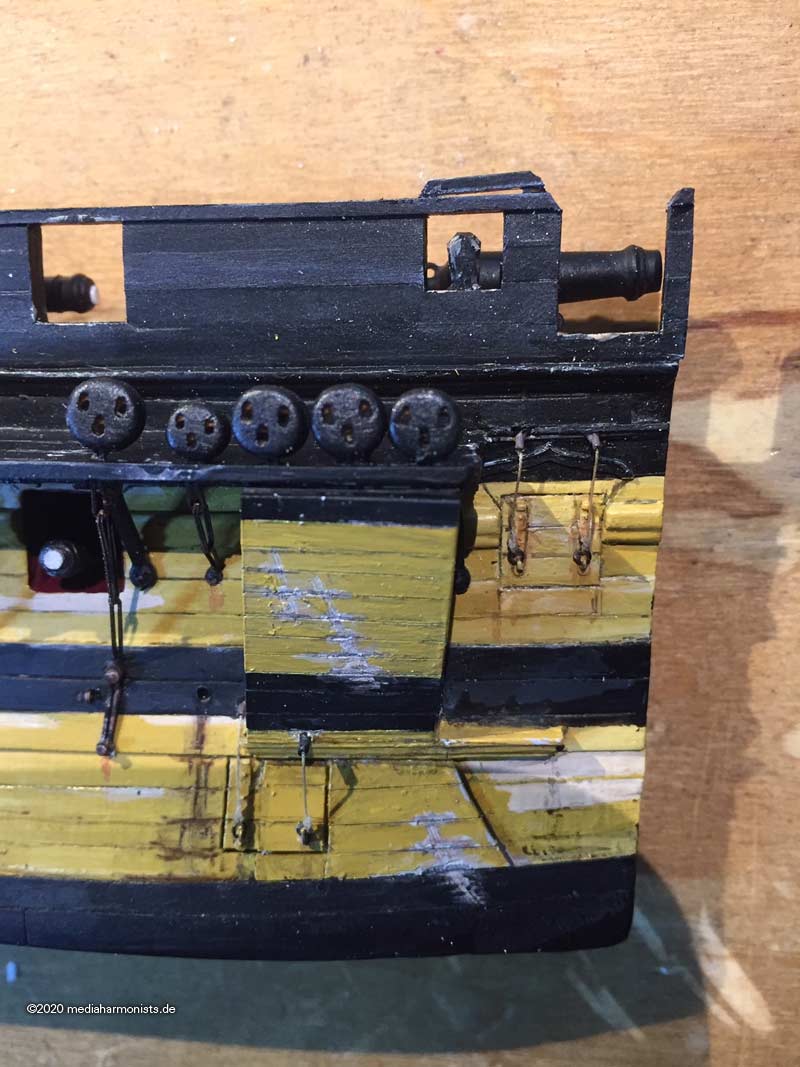
And the flap was an easy Task to be fittet 🙂
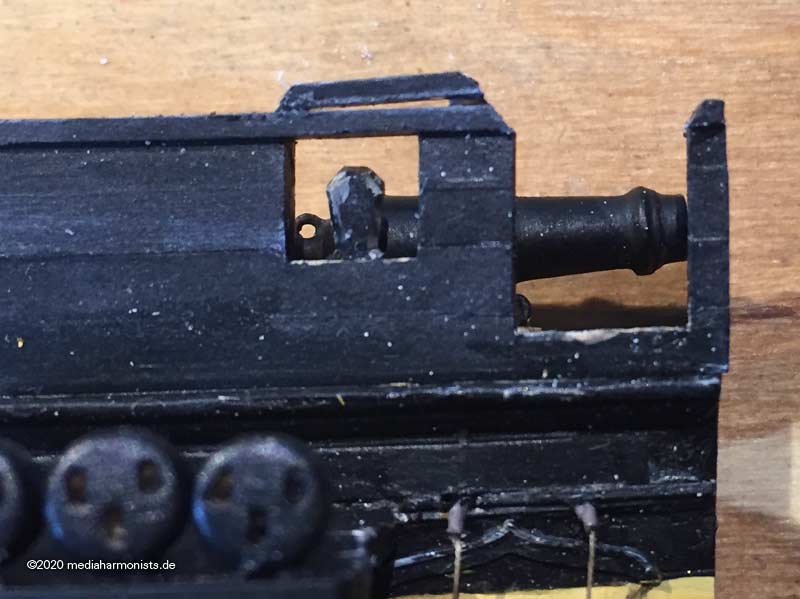
And then we took the chance to go and see some modeler mates ...
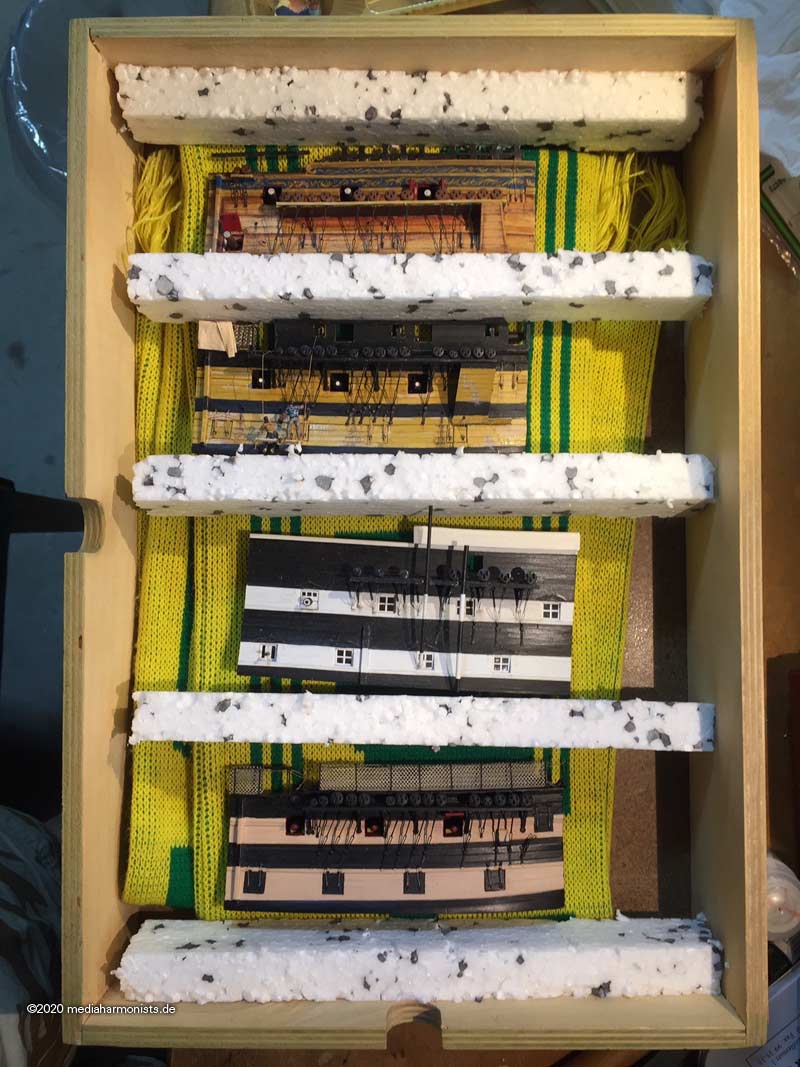
All the best, DAniel
For some reasons the pictures do not show ...
😩 😩 😩
[ edit: pictures rescued 🙂 ]
- rkwz, mort stoll, Morgan and 7 others
-
 10
10



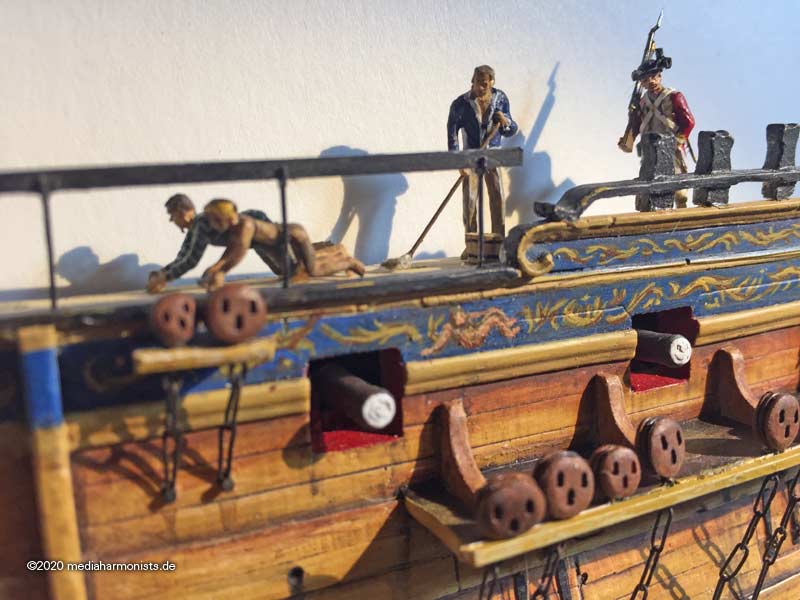
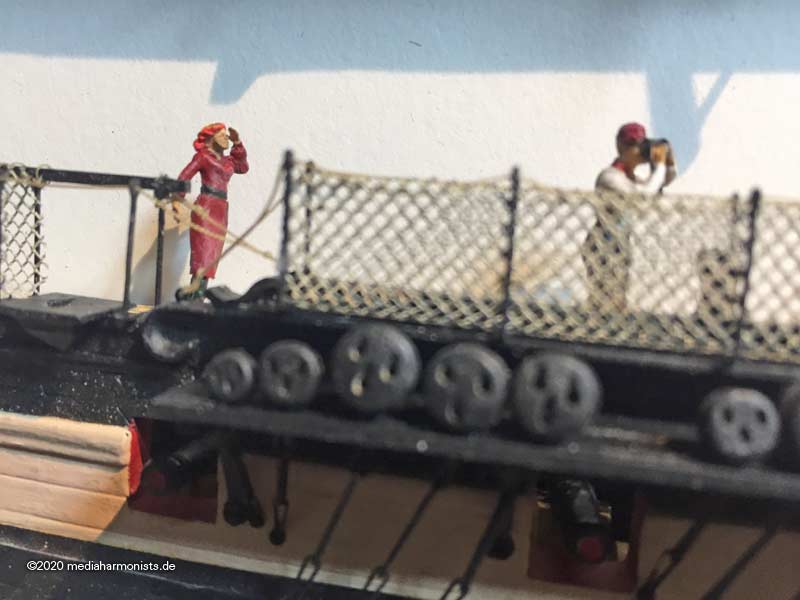
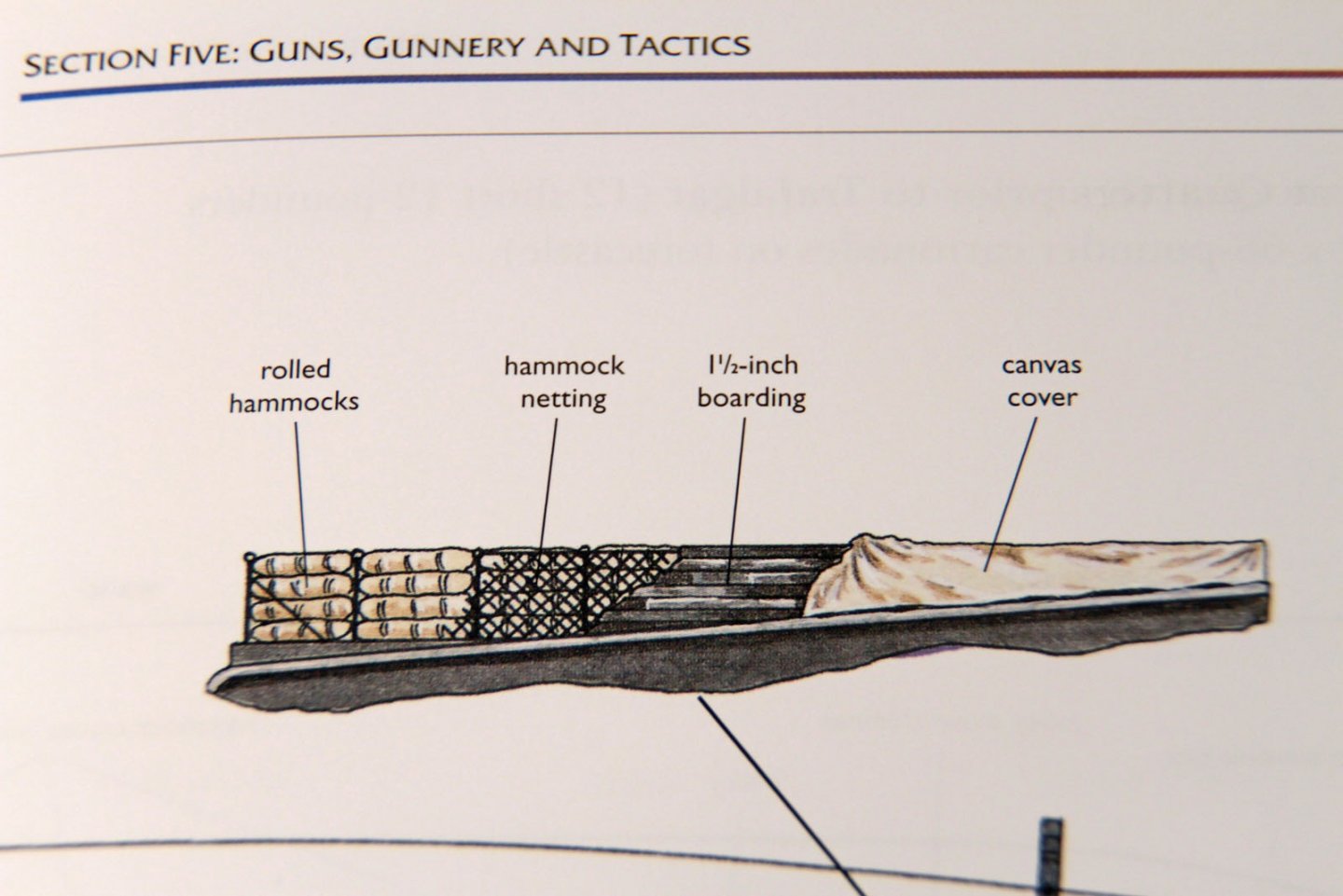

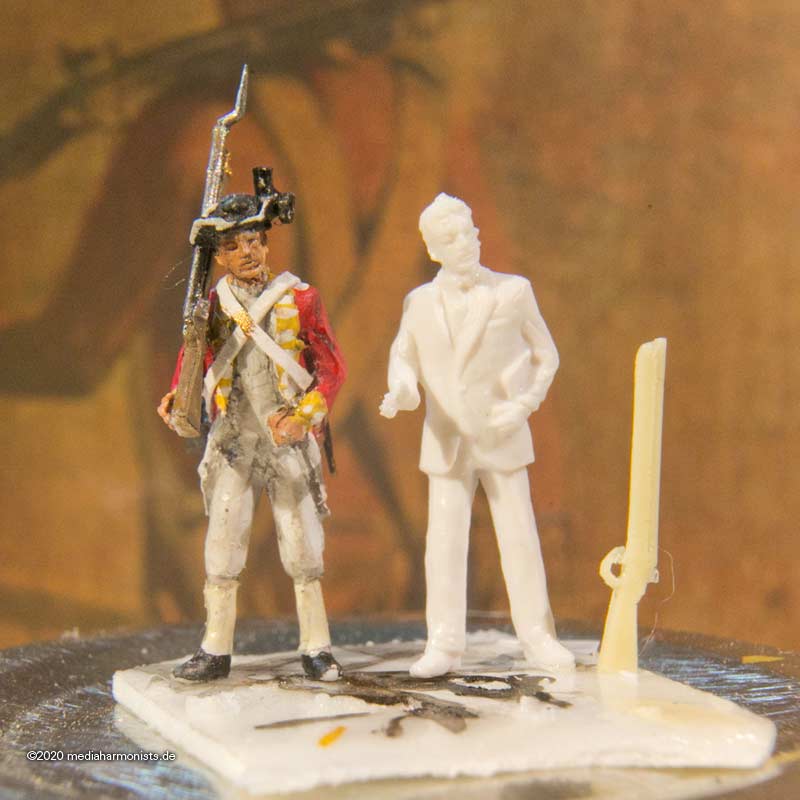
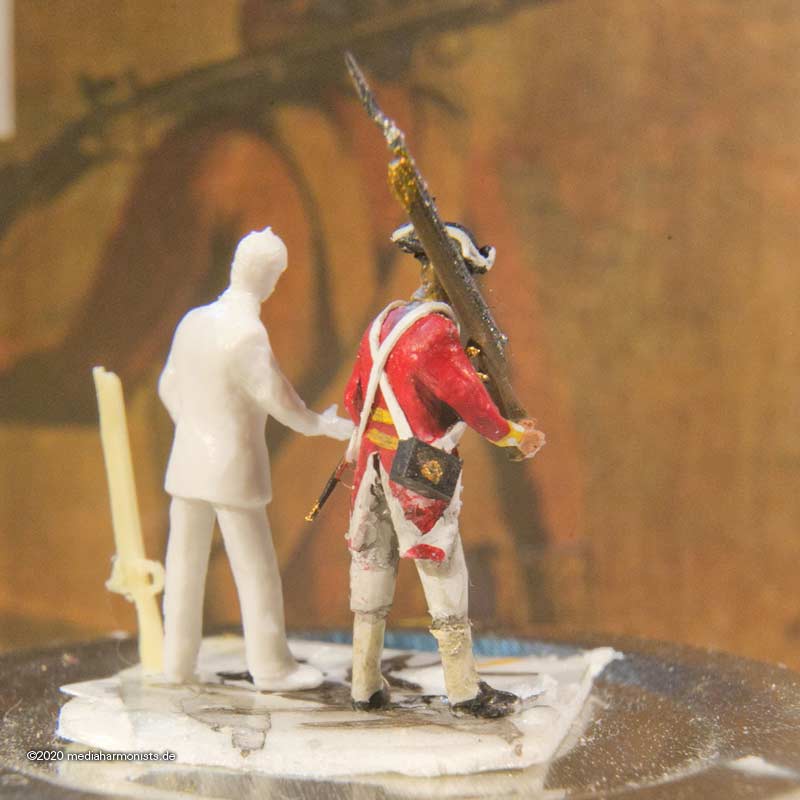
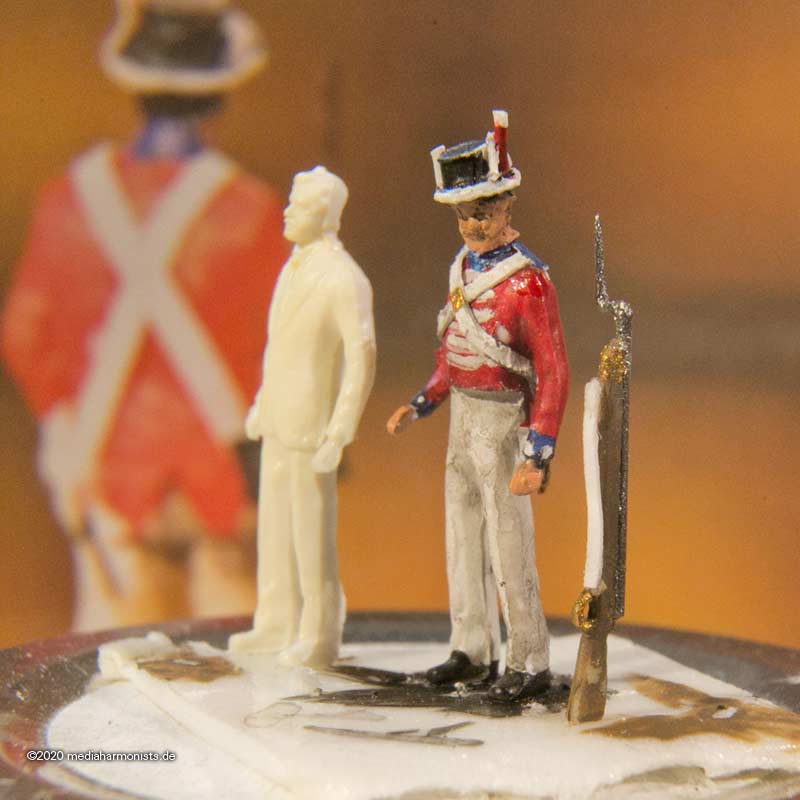
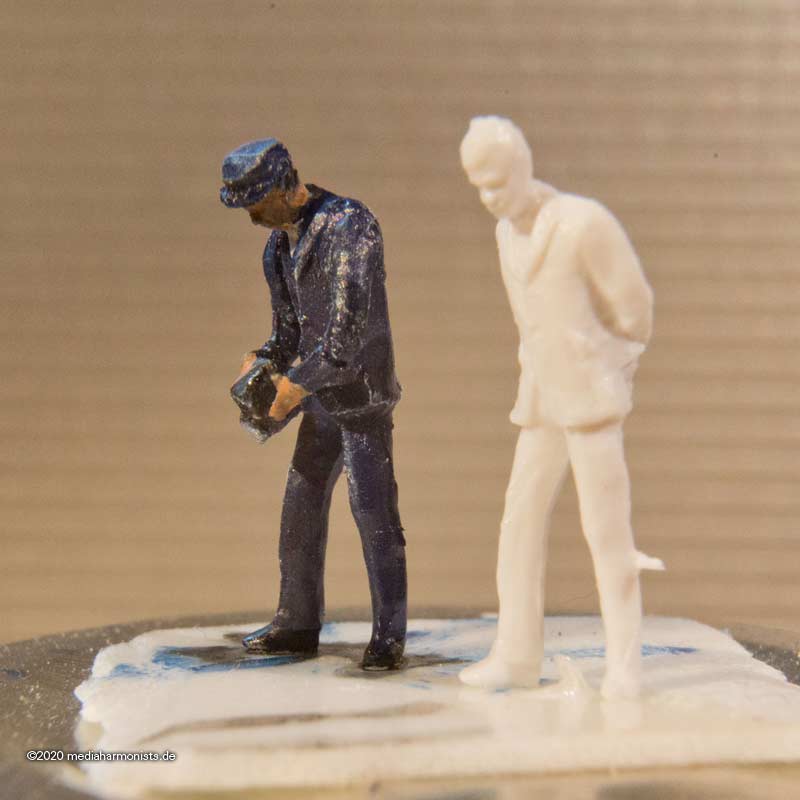
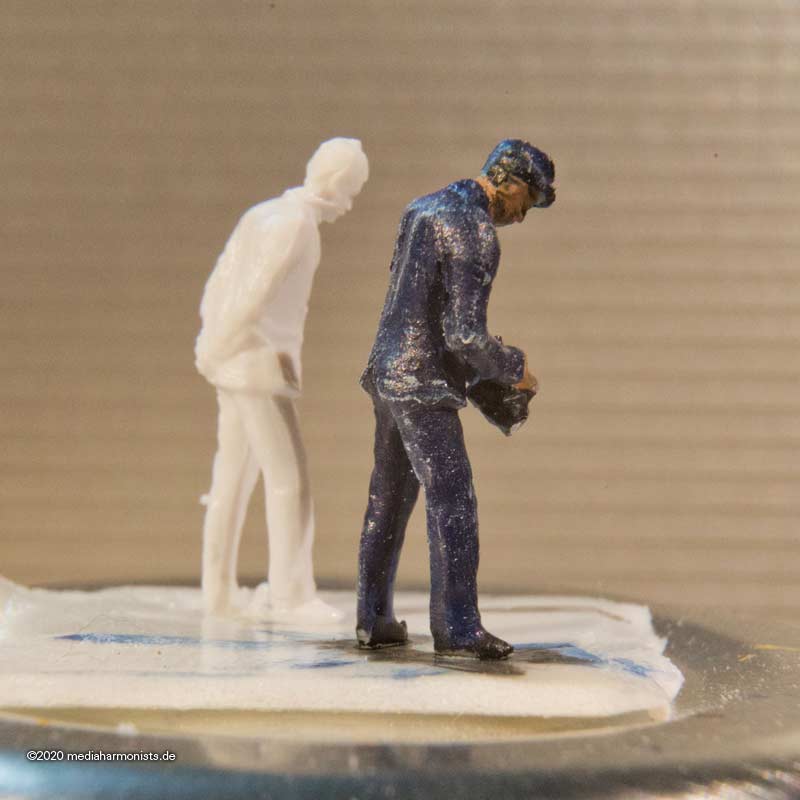
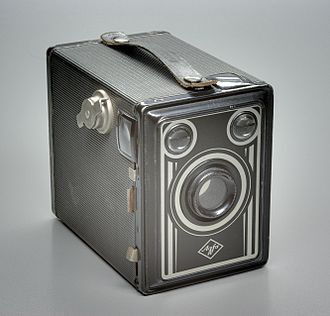
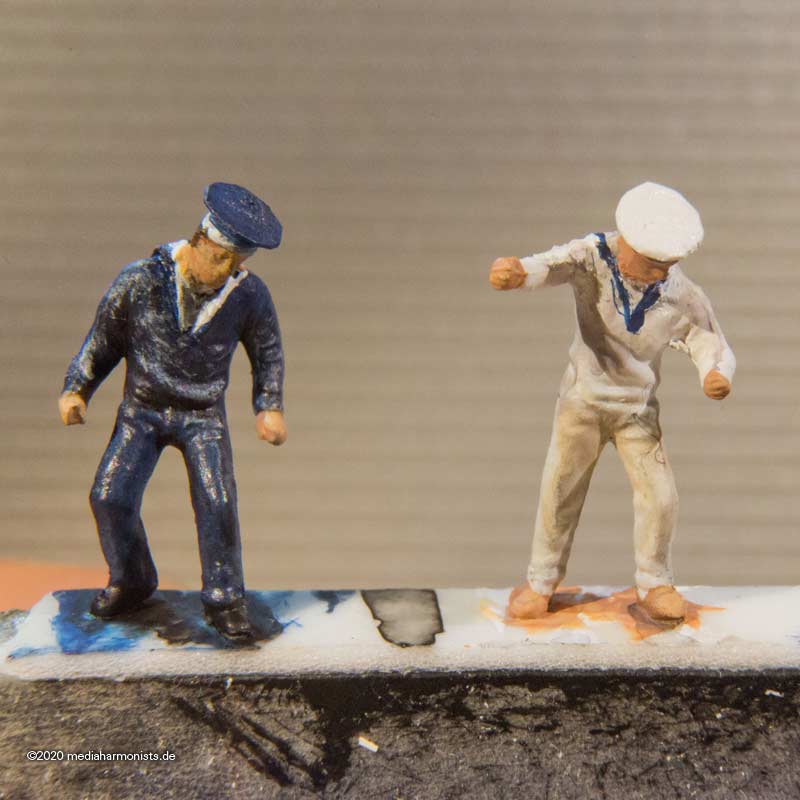
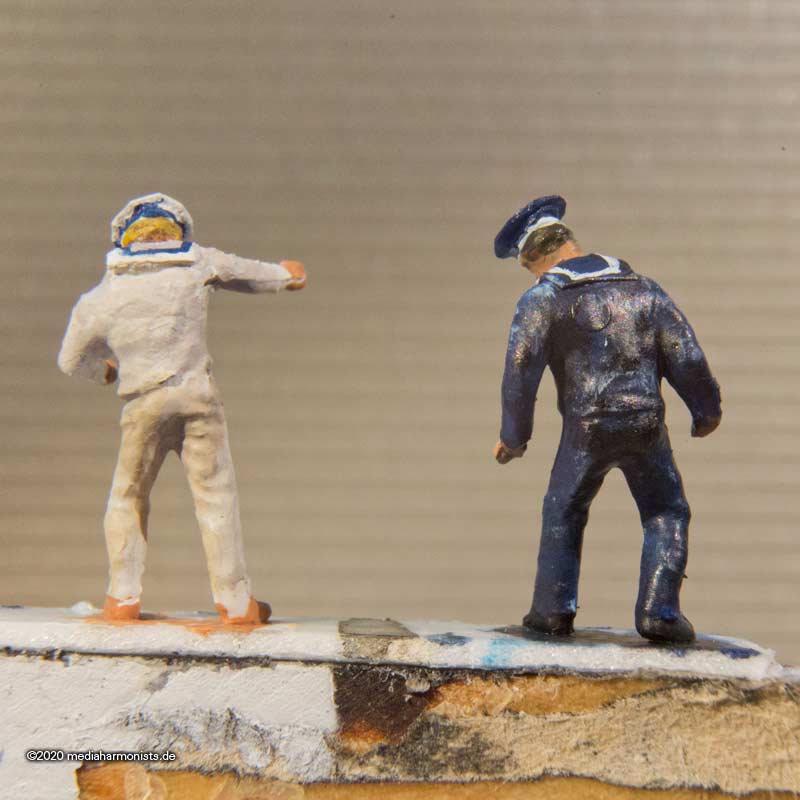
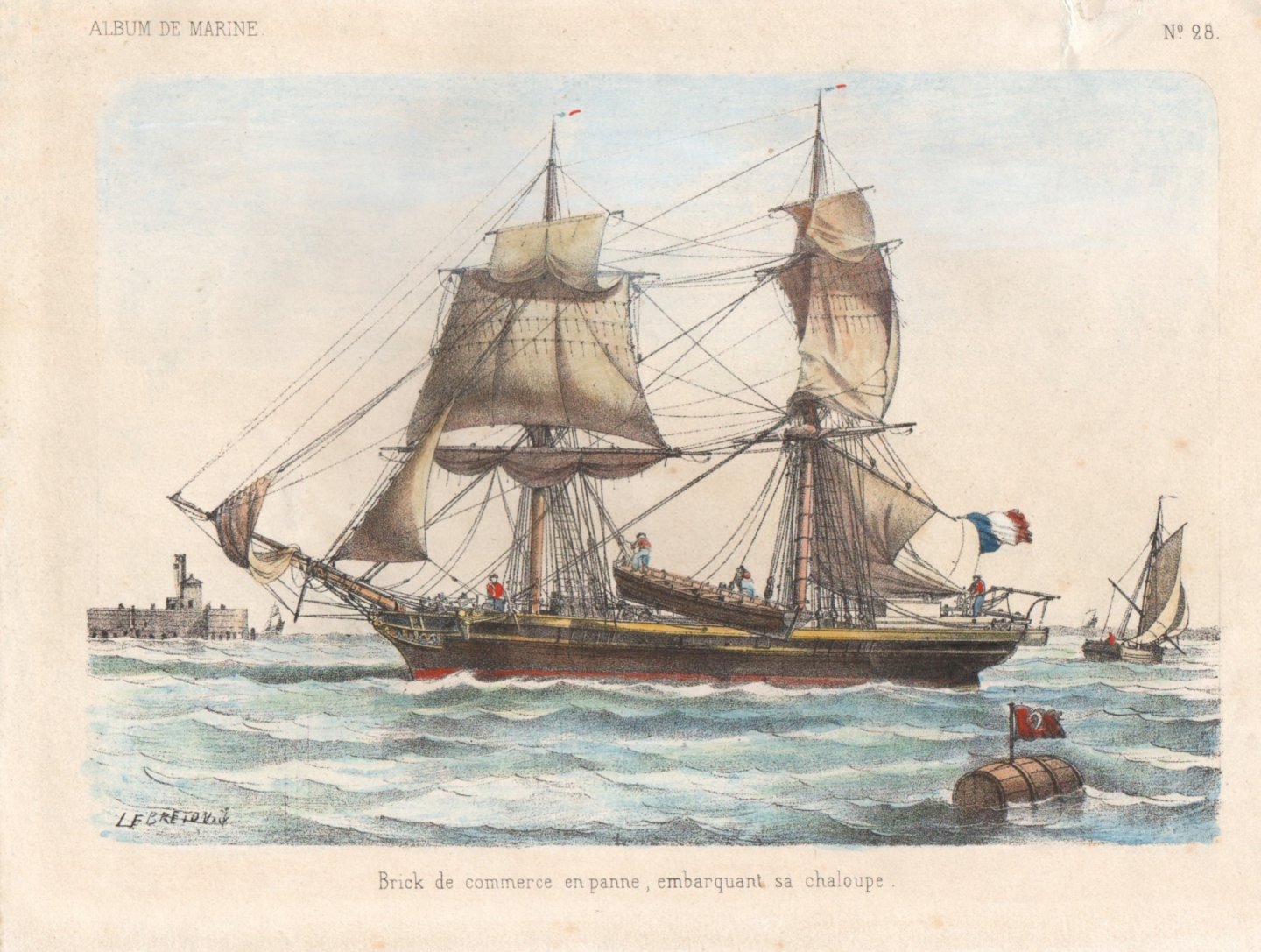
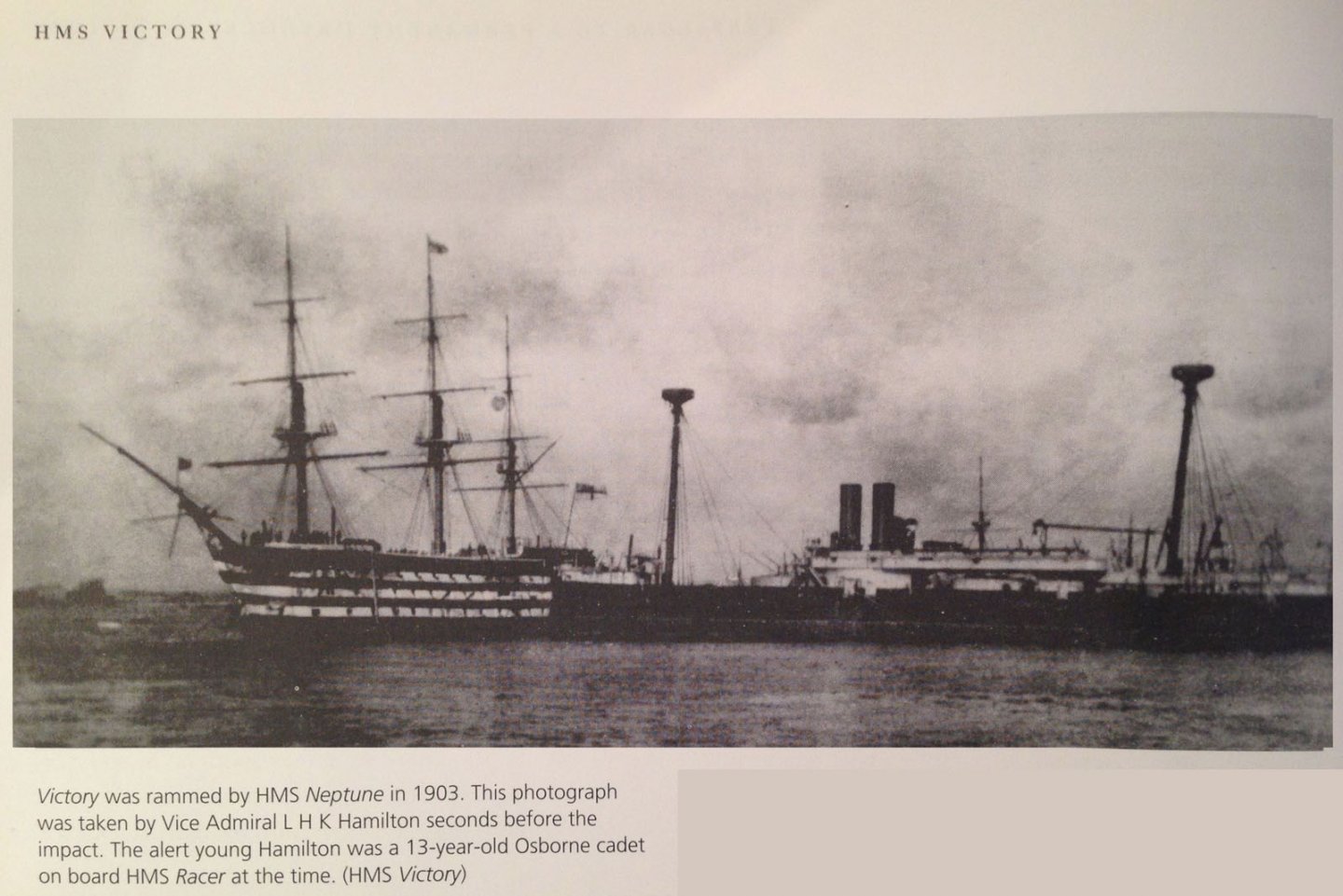
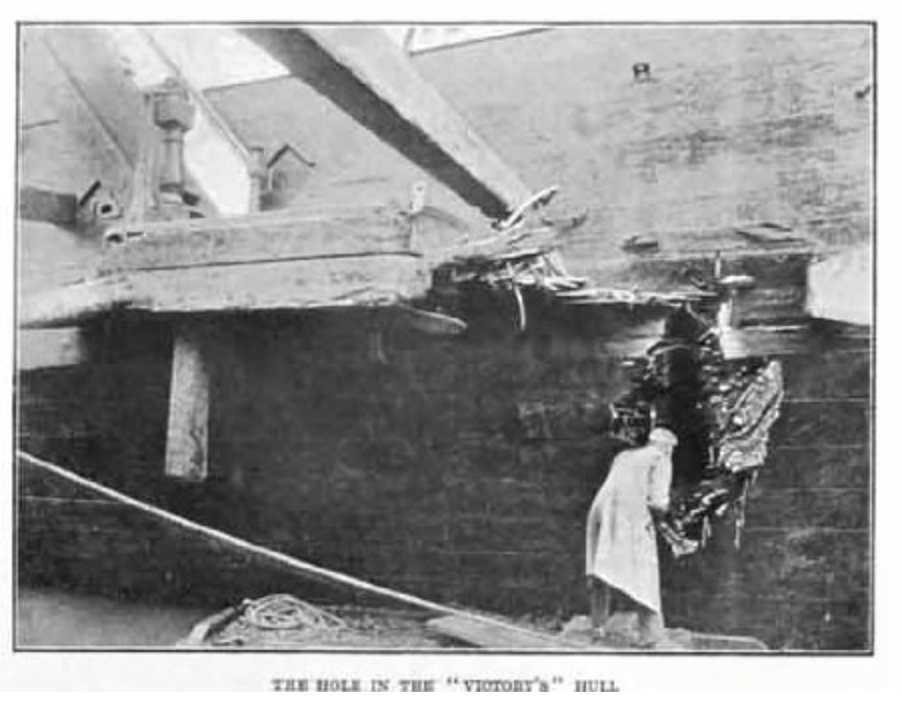
HMS Victory by dafi - Heller - PLASTIC - To Victory and beyond ...
in - Kit build logs for subjects built from 1751 - 1800
Posted · Edited by dafi
Thank you Sirs 🙂 🙂
And here come some more detail shots.
First the in my humble opinion most beautiful appearance of this ship 🙂
The channel boards still in the lower position underneath the ports, the painted friezes and the hull paid with rosin.
The Royal Marine still wears the uniform from about 1780, with the tricorn, the long swallow tails on the coat, the broad revers and the stockings.
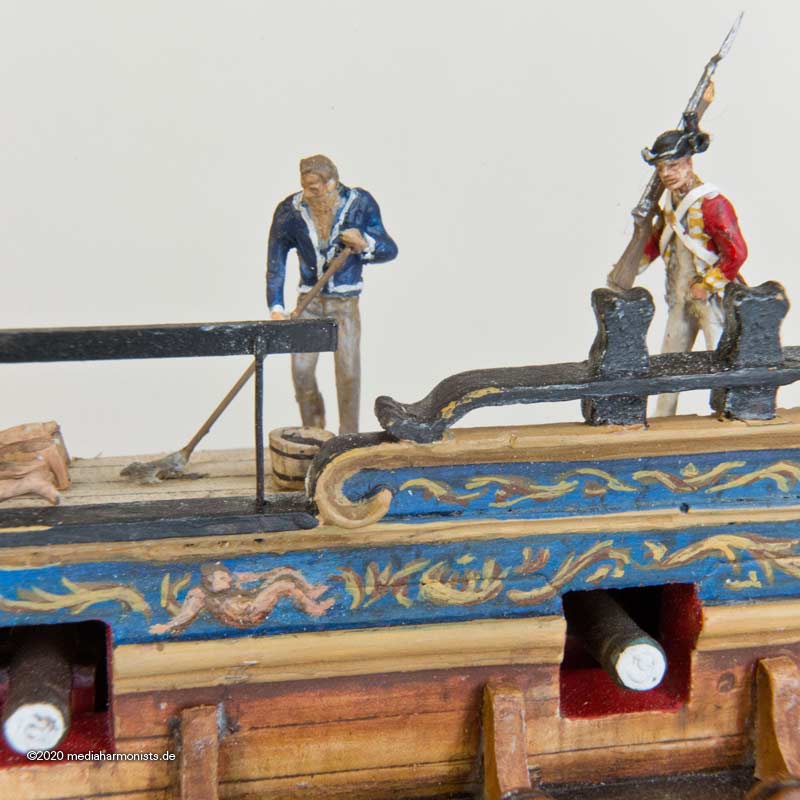
The holystoning gentlemen did not wear a special uniform yet. This was the time by the way, that the holystoning of the decks became quite excessive.
If the Victory was still carrying the original bronze guns or the newer iron cast ones in 1780 I could not yet finally judge. But to show the changes of the ship through the years I opted for the original version for this display. Other nice details are the anchor lining, the 4-piece irons with the eyebolts in between and the bolster for the long fishing davit in between the timber heads. Also a nice detail is the lanyard of the fore gunport lid that is guided elegantly up to the timberhead of the forecastle 😉
Based on the contemporary model from the Victory from 1765.
https://collections.rmg.co.uk/collections/objects/66473.html
XXXDAn